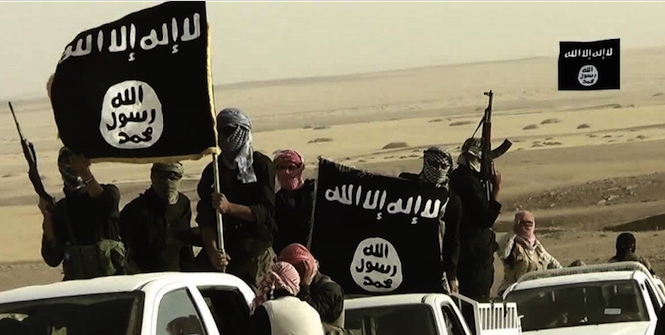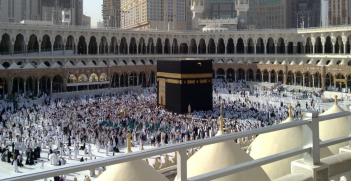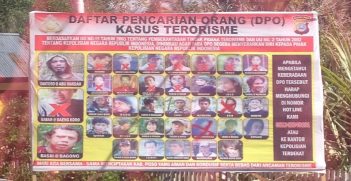Dabiq: The Changing Shape of Jihadist Propaganda

Analysis of jihadist communications is a vital tool for guiding Australian counterterrorism efforts. Islamic State’s Dabiq magazine remains an important source.
Since 2010, jihadist groups such as al-Qaeda in the Arabian Peninsula and the self-proclaimed Islamic State have experimented in the production of English-language e-magazines ostensibly aimed at disseminating propaganda and encouraging individuals to join their cause, including engaging in acts of violent extremism at home and abroad.
In early June 2014, the Islamic State began the production of its first experimental e-magazine, Islamic State News, later renamed Islamic State Report. Production values were high, with content mainly focusing on battlefield victories and early initiatives in local governance. Although the magazine was published in English, it mostly consisted of images and graphics with very little text.
One month later, the al-Hayat (‘Life’) Media Centre—part of the Islamic State’s then growing media apparatus—published the first issue of Dabiq as a response, it was claimed, to the positive feedback received about the group’s earlier publications. The name ‘Dabiq’ was taken from a small town in northern Syria identified in some Hadith texts as the eventual site of an apocalyptic battle between victorious Islamic armies and the forces of ‘Rome’, thus aligning the Islamic State’s military strategy with an eschatological interpretation of end-time prophesy. Since 2014, 15 issues of the magazine have been produced and distributed online in PDF format—the most recent at the time of writing being in July 2016.
Throughout the course of its publication, Dabiq has evolved in terms of its thematic content, layout and style. Despite this evolution, it has successfully adopted a unique and coherent brand identity. Issues have typically run to about 40–80 pages, consisting of articles, transcribed speeches, and the republishing in one place of political, religious and social commentary produced by Islamic State affiliates and supporters.
The magazine presents the Islamic State as a divinely inspired state-building project, with an emphasis on legitimising this project in political and religious terms, calling supporters to arms, and maligning and denigrating perceived enemies.
IS media operations
Although clearly influential, Dabiq should not be read as the sole, or even the major, propaganda tool in the Islamic State’s communications tool kit. The al-Hayat Media Centre, which produces content aimed at non-Arabic-speaking Western audiences, has also distributed numerous popular videos and short films, articles, speeches, news reports and translations of jihadi materials to spread its message and garner recruits.
At the time of writing, the Islamic State is increasingly facing a series of significant challenges to its state-building project, not least the rapid loss of territory in both Syria and Iraq. These losses have been reflected through shifts in the group’s communications strategy.
For instance, in mid-2016, the Islamic State produced two issues of a new e-magazine, Rumiyah, which appeared to withdraw emphasis on local issues in favour of a more explicit focus on anti-Western propaganda. Additionally, the October 2016 loss of the township of Dabiq to Turkish-backed forces presented a symbolic blow to the Islamic State’s conceptualisation of itself as an agent of divine prophesy, which may mean a discontinuation or rebranding of the Dabiq title.
While this may be the case, Dabiq still represents a popular and easily accessible element of the Islamic State’s global communications output, making a thorough and methodologically rigorous assessment of its content necessary.
As an instrument of jihadi discourse, thematic analysis shows that Dabiq is particularly engaged with group-level identities. This echoes work by Haroro Ingram, who has previously studied the magazine’s bipolar treatment of in-group and out-group identities in some depth.
Dabiq draws a persistent and stark distinction between Muslims and non-Muslims. It uncompromisingly asserts the superiority of the former over the latter, conveying an accompanying theme of Muslim unity throughout.
Dabiq’s editors have focused heavily on this out-group rejection, particularly in more recent issues. In this sense, the magazine habitually expresses the Islamic State’s identity and authority not just in its own right, but also through contrast with other groups—particularly al-Qaeda and local militias.
The Islamic State’s supposed positive traits, uniqueness, strengths and victories are no doubt still discussed and emphasised without reference to out-groups, but out-group comparison remains a key method for the Islamic State to assert its own legitimacy.
When Dabiq is not contrasting the Islamic State with other groups, group-level identity is still a crucial element of the magazine’s narrative. Themes related to allegiance, the Islamic State’s strengths and victories, territorial expansion and brotherhood all feature consistently and prominently. These themes seek to create an in-group identity centred on victory, and to frame the Islamic State’s expansion and successes as a group achievement on behalf of Islam itself.
A recruitment tool?
Dabiq’s intended audience is somewhat unclear. While the magazine is published in several languages—including Arabic, French and German—it predominately receives attention in the West due to its English-language version, which is also apparently its most popular version.
This English-language format, along with appeals to emigration and individual jihad, is often taken as a sign that the magazine serves a function of recruiting and inspiring Western Muslims. However, themes relating to a ‘Call to Arms’ are generally less pervasive than other categories of themes contained within the magazine.
The magazine’s articles are long-winded, laborious to read, and heavily focused on justifying the group’s actions and religious legitimacy. These factors render vast sections of the magazine somewhat inaccessible to a casual Western audience.
While popular characterisations of Dabiq as a Western recruitment tool are in some way accurate, they are incomplete and do not represent the best way to capture the magazine’s thematic essence or characterise its contents.
Instead, thematic analysis shows that the magazine appears to function more as a form of press release. It provides the Islamic State with an opportunity to justify its actions and its religious authenticity to a broader Muslim audience and taunt its enemies.
It seeks to position the Islamic State at the vanguard of a global Islamist revolution, to provide religious legitimacy and justification to the group’s actions, to pacify would-be challengers, to communicate with existing supporters, and to attract attention and reporting from mainstream Western media outlets. Based on thematic analysis, Dabiq’s primary function is ultimately to provide the Islamic State with legitimacy both within and beyond its borders, and recruitment is only one of many benefits that accompany this legitimacy.
Changing times
At a high level of thematic interpretation, the magazine’s narrative has remained relatively constant. Basic themes consistently fit within the same global theme (‘Islam Is at War’) and four organising themes (‘Religion’, ‘Enemies’, ‘Call to Arms’ and ‘Building the Caliphate’). Yet these basic themes themselves have shifted in presence and pervasiveness across time. Thematic network analysis reveals a thematic landscape that has shifted in four relatively distinct phases over the magazine’s first 13 issues.
The first of these phases includes issues 1 and 2. Here, Dabiq focuses on themes within the ‘Building the Caliphate’ organising theme. These issues place emphasis on asserting the religious and functional legitimacy of the Islamic State’s caliphate-building project and leadership.
The magazine’s second thematic phase includes issues 3 and 4. These issues see a reduction in focus on state-building matters and a shift in attention to anti-Western themes.
Issues 5 through 8 constitute the magazine’s third phase, wherein the thematic focus differs on an issue-to-issue basis with no clear trends present. Phase four includes issues 9 to 13, which exhibit a strong focus on out-groups and the Islamic State’s purported enemies.
Recognising these thematic dynamics is of crucial importance for those engaged in counter-messaging and the development of counternarratives. These practitioners must maintain an awareness of Dabiq’s tendency to shift its thematic focus over time, as well as its focus on group-level identities and religion.
Due to Dabiq’s thematic dynamism, it will not be possible to develop static counternarratives free from a need for ongoing maintenance and engagement. Continual and agile analysis of jihadist propaganda will prove necessary to ensure that the understanding of such texts is up to date, and that counter-messaging efforts are appropriately targeted, relevant and timely.
Dr Julian Droogan is a senior lecturer in the Department of Security Studies and Criminology at Macquarie University.
Shane Peattie has a Master of Policing, Intelligence and Counter Terrorism with the degree of Master of International Security Studies from Macquarie University, Australia.
This is an edited extract of an article first published in the Australian Journal of International Affairs on 10 August 2017. The full text can be found here.





